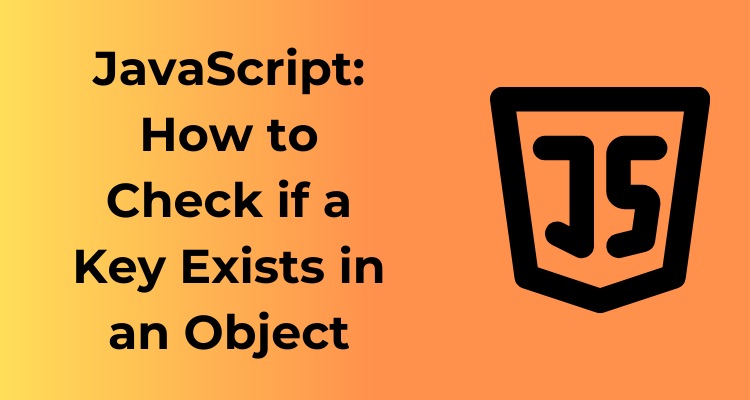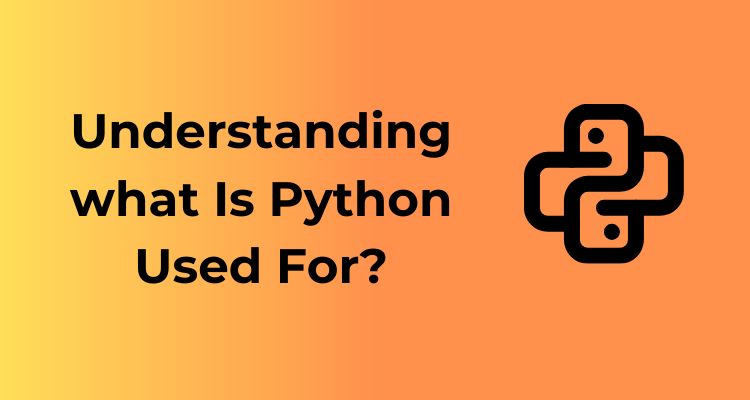Alright, let’s dive right in! Before we get into the nitty-gritty of checking if a key exists in an object, it’s important to understand a couple of fundamental concepts: objects and keys. If you’re already a bit familiar with JavaScript, you’ve surely bumped into these before.
At its core, JavaScript objects are collections of properties. Think of an object as a box that contains different pieces of information, organized with labels (or keys). Here’s an example for a bit of context:
const person = {
name: 'Alice',
age: 30,
profession: 'Developer'
};
In the example above, the object person has keys like name, age, and profession, each paired with a specific value. A key is nothing more than the label for a property, making it easy to organize and retrieve data.
What’s the Purpose of Keys?
An object’s keys help you identify properties within the object, much like labels on file folders help you find the right document. They’re essential for accessing, modifying, or working with the data stored inside the object. Let’s break it down even further with a few bullet points:
- Identification: Keys let you locate individual pieces of data in an object, such as the name or age of a person.
- Structure: By assigning keys, you ensure data is well-organized. You can quickly retrieve what you need without searching everywhere.
- Flexibility: You can add, remove, or edit key-value pairs at any time, making objects adaptable to various tasks.
Keys and Values Work as a Team
Each key in an object points to a value. It matters because using these keys effectively gives you the power to control your data. Here’s a quick comparison to help you visualize:
Imagine you’re at a library. The keys are like book titles, and the values are the content inside the books. Without the titles, it’d be chaos trying to find the right book, right?
Objects Can Hold Amazing Variety!
One of the beautiful things about JavaScript objects is how flexible they are. Their keys don’t have to be limited to just strings or numbers. You can have all sorts of combinations for the values, such as:
- Strings (
"Hello"or'World') - Numbers (
42or3.14) - Booleans (
trueorfalse) - Arrays (
[1, 2, 3, 4]) - Even other objects!
This flexibility makes objects a cornerstone of working with structured data in JavaScript.
A Quick Note on Object Keys
One thing to keep in mind is that JavaScript converts all object keys to strings (except for the ones in Maps or special data types). Here’s a fun fact: if you use numbers as object keys, JavaScript will treat them as strings automatically. For example:
const obj = { 1: 'one', 2: 'two' };
console.log(obj['1']); // Output: 'one'
Why Checking for a Key Matters in Coding

Imagine trying to locate your favorite book in a massive library. You wouldn’t want to spend hours searching shelves only to find out it’s not even there, right? Checking whether a key exists in a JavaScript object is a lot like that—it’s a quick way to ensure you’re not chasing something that simply doesn’t exist. But why does it matter so much in coding? Let’s dive in!
The Backbone of Reliable Code
In the code we write, objects often act as building blocks. Whether you’re handling user data, fetching API responses, or creating configuration settings, objects are everywhere. Now, what happens if you assume a key exists in an object when it actually doesn’t? Chaos!
Accessing a non-existent key can lead to bugs like undefined values, errors, or worse—your application crashing. Preventing these situations makes your code more robust, reliable, and, let’s be honest, way easier to debug.
Handling Real-World Scenarios
Here’s the thing: real-world data can be unpredictable. For instance:
- A user might fill out part of a form but skip certain fields.
- An API might return incomplete or differently-structured data.
- Your own app might evolve with new features, with some older features becoming optional.
In scenarios like these, blindly assuming a key will exist in your object can lead to unnecessary frustration. By actively checking for a key’s existence, your code can dynamically adapt to different situations without breaking.
Optimizing Performance and User Experience
Checking for keys also enhances performance and user experience in your application. Confused? Let’s unpack this idea:
- It prevents unnecessary operations: If a key doesn’t exist, your code doesn’t waste time performing calculations or logic based on that missing data.
- It ensures clear communication: By verifying key existence, you can provide proper error messages or fallback behavior rather than leaving users scratching their heads.
- It safeguards resources: Particularly when dealing with databases or API calls, ensuring you have valid data can save bandwidth, computation power, and even money.
Future-Proofing Your Code
Let’s not forget that today’s keys might not always align with tomorrow’s data structures. Teams refactor, APIs update, and user behaviors change. Proactively checking for keys in objects provides a layer of future-proofing. It’s like having a safety net when diving into the dynamic world of application development.
Plus, as a developer, clear and informed error-handling practices—like validating keys—show you’ve thought about what could go wrong, which is *super impressive* to code reviewers, teammates, or even your future self!
A Coding Philosophy: Trust, but Verify
At the end of the day, checking for a key is more than just a technical necessity—it’s a mindset. It’s about embracing the idea of trust, but verify, in your coding journey. Assume nothing, validate your data, and watch as your code becomes the rockstar that refuses to break under pressure.
So, the next time you’re working with an object, don’t skip that key-check—it’s your secret to writing smarter, sturdier applications. Trust me, your future debugging-self will thank you for it!
Using the “in” Operator for Key Existence
Ah, the in operator – a small yet mighty tool that can save your coding day! When working with JavaScript objects, there are times you’ll need to check if a specific key exists within the object. That’s where the in operator swoops in like a superhero.
Let’s break it down step-by-step to ensure you get a firm grip on this handy operator.
1. What is the “in” Operator?
In JavaScript, the in operator checks whether a specified key (or property) exists within an object (or its prototype chain). It’s simple yet effective when you need to verify the presence of a key without having to worry about undefined errors creeping in.
The syntax is straightforward:
key in objectHere’s what happens:
- The
keyis the property you’re looking for (a string). - The
objectis where you’re searching for that property.
2. A Real-Life Example
Let’s say you’ve got an object representing a favorite coffee order:
const coffeeOrder = {
size: "Large",
type: "Cappuccino",
sugarFree: true,
};
If you want to check if the key "sugarFree" exists in the object, you’d do this:
'sugarFree' in coffeeOrder; // This will return true
Conversely, testing for "milkType" (a key that doesn’t exist) will return:
'milkType' in coffeeOrder; // This will return false
That’s it! Quick, easy, and efficient.
3. The Superpower: Inclusion of Prototype Chain
What sets in apart from some other methods is its ability to check not just the object itself but also its prototype chain. If the key exists somewhere in the prototype chain, the in operator will still return true.
Take this scenario:
const baseMenu = { beverage: "Coffee" };
const customOrder = Object.create(baseMenu);
customOrder.size = "Medium";
'beverage' in customOrder; // This will return true
Even though "beverage" is not a direct property of customOrder, it’s found in its prototype chain.
4. When to Use the “in” Operator
The in operator is your go-to when:
- You want a quick check for key existence.
- You’re okay with properties that belong to an object’s prototype chain.
- You’re debugging or performing safeguard checks before accessing a value.
5. A Word of Caution!
If you’re only interested in direct properties of an object (ignoring the prototype chain), the in operator might not be the best option. Instead, you’d want to explore hasOwnProperty (but we won’t dive into that here since it’s covered in another section).
Checking Key Existence with the “hasOwnProperty” Method
Let’s talk about one of the most reliable ways to check whether a key exists in an object: the hasOwnProperty method. If you’ve ever been on a JavaScript adventure (and let’s be honest, debugging counts as an adventure), this method is like having a trusty map—it keeps you on the right track.
What is hasOwnProperty, Anyway?
Simply put, hasOwnProperty is a method that belongs to every object in JavaScript. Its main purpose? To determine if an object contains a property as its own (not inherited). Sounds easy enough, right?
Let’s break that down a bit more. By using this method, JavaScript will confirm if the key you’re checking is directly part of the object, without considering anything it may have inherited from its prototype.
How to Use hasOwnProperty in Practice
Here’s what the syntax looks like:
object.hasOwnProperty(key)Where object is your target object, and key is the property you’re trying to check for.
Imagine you have an object like this:
const car = {
make: "Toyota",
model: "Corolla",
year: 2020,
};
Now, let’s put hasOwnProperty to work:
console.log(car.hasOwnProperty("make")); // true
console.log(car.hasOwnProperty("color")); // false
The first check returns true because make is a property of car. The second check returns false because color isn’t a defined property of car. Simple, right?
Why hasOwnProperty Stands Out
Here’s the beauty of using hasOwnProperty: it keeps you safe from unintentional prototype pollution. If the object inherits properties from its prototype, hasOwnProperty ignores those. This makes it super precise and reliable for checking only the keys explicitly defined on the object.
An Example of Why This Matters
Take this scenario: you have an object, but it inherits a method from its prototype:
const obj = {};
console.log(obj.toString); // Exists but inherits from Object’s prototype
console.log(obj.hasOwnProperty("toString")); // false, because it’s not "own"!
If you’re relying solely on other methods, you might mistakenly think toString is part of your object. But with hasOwnProperty, you can be 100% certain it’s not.
When to Use hasOwnProperty
- When you want to target only keys that belong directly to the object, not those inherited from its prototype chain.
- When working in a project where prototype pollution might be a concern (e.g., working in shared or preloaded environments).
Tips for Using hasOwnProperty
- Remember to call
hasOwnPropertydirectly from the object, like this:object.hasOwnProperty(). - Be mindful of cases where the object itself could be null or undefined—always check that the object exists before using the method.
- Looking to avoid naming conflicts? If there’s any chance an object could redefine
hasOwnProperty, you can useObject.prototype.hasOwnProperty.call(object, key)instead. It’s rare but good to know!
Leveraging Optional Chaining to Avoid Errors

Hey there! Have you ever encountered a pesky JavaScript error when trying to access a deeply nested object property, only to learn that one of the keys wasn’t where you expected it to be? If you answered “yes,” let me introduce you to your new best friend: optional chaining. It’s not only about avoiding errors—it’s about writing efficient, clean, and headache-free code!
What is Optional Chaining?
Optional chaining (?.) is a modern and powerful feature in JavaScript that lets you easily and gracefully handle situations where a property you’re trying to access may not exist. Instead of throwing an error, it safely returns undefined. Boom, problem solved!
Think of optional chaining as a safety net. It’ll catch your code just before it falls into a pile of runtime errors because of missing or undefined keys. Doesn’t that sound like a developer’s dream?
How Does It Work?
Let me show you optional chaining in action:
const user = {
name: "John Doe",
socialMedia: {
twitter: "@johndoe"
}
};
// Safe way to access nested keys:
const twitterHandle = user.socialMedia?.twitter; // "@johndoe"
// No error even if the key doesn't exist:
const linkedIn = user.socialMedia?.linkedIn; // undefined
See how it skips the error and just gives you undefined if something doesn’t exist? No more sweating over trying to check every single level of an object before accessing that final property!
When Should You Use Optional Chaining?
Honestly, whenever you’re working with objects that aren’t set in stone and may have unpredictable or missing keys, optional chaining is your best bet. Here’s a quick guideline:
- APIs and external data: Data from APIs often have optional or conditional keys. Optional chaining allows smooth access without errors.
- Nesting: If you’re working with deeply nested objects, it saves you from writing endless
ifstatements or conditional checks. - User-generated content: Content created directly by users might not include every property you expect.
What Happens Without It?
Without optional chaining, the alternative would be lengthy and repetitive checks, like this:
// Without optional chaining
const twitterHandle = user &&
user.socialMedia &&
user.socialMedia.twitter ? user.socialMedia.twitter : undefined;
Let’s be honest—that’s neither pretty nor fun to write.
Pro Tip: Combine Optional Chaining with Nullish Coalescing
Here’s a bonus for you: optional chaining works beautifully with another handy operator, nullish coalescing (??). Combine them to provide default values when something is undefined:
const twitterHandle = user.socialMedia?.twitter ?? "No Twitter account";
console.log(twitterHandle); // "@johndoe" or "No Twitter account"
Where Can It Go Wrong?
While optional chaining is amazing, it’s not a silver bullet. Here are a couple of things to keep in mind:
- Breaking old browsers: If you’re supporting older browsers, this syntax might not work without a transpiler like Babel.
- Overuse alert: Be mindful not to overuse it. If you find yourself chaining too many uncertain keys together, consider refactoring your code for clarity and maintainability.
Comparing Common Methods: Pros and Cons
When it comes to checking if a key exists in an object in JavaScript, there isn’t a one-size-fits-all approach. Each method you encounter has its unique strengths—and, let’s not forget, some limitations that might trip you up if you’re not aware. Let’s roll up our sleeves and see how common methods stack up against one another!
The “in” Operator
The in operator is like your go-to magnifying glass for checking whether a property exists in an object, regardless of whether it’s own (directly declared within the object itself) or inherited via the prototype chain.
Pros:
- Super easy to use! Just say
'key' in object. - Includes inherited properties, which can be very handy in certain scenarios.
Cons:
- Sometimes, that inclusion of inherited properties might give you more results than you bargained for.
- If you strictly want own properties, this might not be the right choice.
hasOwnProperty()
This method is like a gatekeeper. It checks for keys that the object owns, ignoring anything inherited from prototypes. Think of it as sticking to the most immediate circle and nothing more.
Pros:
- Pinpoints only own properties—all signal, no noise from inherited ones.
- Reliable and doesn’t do anything unexpected.
Cons:
- It’s a bit wordier than the
inoperator, so you’re typing more. - It won’t work if you are ambiguous about the ownership of a key that could exist down the prototype chain.
Optional Chaining
Optional chaining (?.) isn’t explicitly for checking key existence, but if you’re tired of dealing with errors like TypeError: Cannot read property of undefined, this will feel like a lifesaver. It’s a more indirect approach, but it still works wonderfully in avoiding mishaps while resolving property access.
Pros:
- No more runtime errors when the key doesn’t exist. It simply returns
undefined. - Great for cases where nested objects are involved and you need to tread carefully.
Cons:
- It doesn’t firmly say whether a key exists—it just prevents errors. You might need to combine this with another technique to be certain.
- Not supported in older browsers without transpilation (though that’s becoming less of an issue these days).
Which One Should You Use?
The right tool for the job depends on context:
- If you just want to know if a property exists—even if it’s inherited—
inis your quickest bet. - If you need to confirm a key is an own property and rule out anything from the prototype chain,
hasOwnProperty()is your go-to. - If you’re navigating deeply nested objects and want to avoid runtime errors, optional chaining is your trusty sidekick.
Best Practices for Working with Keys and Objects
When working with objects and their keys in JavaScript, using efficient and effective practices can save you time, reduce bugs, and make your code much more approachable for others (or even yourself in the future!). Whether you’re a beginner or an advanced developer, following these best practices will boost your coding game.
1. Default to Modern Syntax
First and foremost, embrace newer JavaScript features, like Optional Chaining and Object.keys(), whenever possible. These tools not only simplify your work but also improve readability. For instance, optional chaining (?.) can help you safely access deeply nested keys without worrying about errors when intermediate objects are null or undefined. By staying updated with JavaScript’s growth, you’ll equip yourself with tools that streamline your codebase.
2. Handle Undefined or Null Values Gracefully
Objects may contain unexpected undefined or null values, especially when pulling data from external sources like APIs. Always include conditional checks to avoid runtime errors. For example:
let value = obj?.key ?? "defaultValue";Here, the ?? (nullish coalescing operator) ensures that even if the key doesn’t exist, you have a fallback value, preventing crashes or unexpected behavior.
3. Stick with Consistent Naming Conventions
Clear, consistent naming conventions for keys make your objects easier to understand. Use camelCase, such as firstName, for property names and avoid mixing formats (e.g., some_snake_case mixed with camelCase). This consistency is particularly useful for larger projects or collaborative work.
4. Use hasOwnProperty for Own Properties
When you need to ensure you’re checking only an object’s own properties (not inherited ones), stick to hasOwnProperty. It’s a reliable way to avoid getting tripped up by unwanted prototype-related keys.
if (obj.hasOwnProperty("keyName")) {
console.log("Key exists!");
}However, a common mistake here is forgetting to validate that the object itself isn’t null or undefined before making this check — so proceed cautiously!
5. Make Use of Spread Operator for Cloning
When you need to work on or manipulate an object, avoid making direct changes to the original object. Instead, use the spread operator (...) to clone it and make changes safely:
let clonedObj = { ...originalObj, newKey: "newValue" };
console.log(clonedObj);This keeps your code cleaner and prevents unintended side effects, which is especially critical in shared or reusable functions.
6. Avoid Overwriting or Reusing Key Names
Objects with key collisions or overwrites can cause subtle bugs. If you ever dynamically set keys, ensure the new key doesn’t already exist in the object unless you specifically intend to overwrite it. Tools like Object.keys() or the in operator can precheck this:
if (!("keyName" in obj)) {
obj["keyName"] = "value";
}7. Document Your Objects
For complex objects, keep documentation or notes handy, either in the code as comments or externally, to describe what key-value pairs the object is expected to have. This is extremely valuable when working in collaborative environments.
// Example of object structure
// {
// id: number,
// name: string,
// isActive: boolean
// }
8. Validate Data Sources
If you’re working with user input or third-party APIs, validate the data before adding it to your objects. Libraries like Yup or AJV are excellent tools for validating complex data structures.









